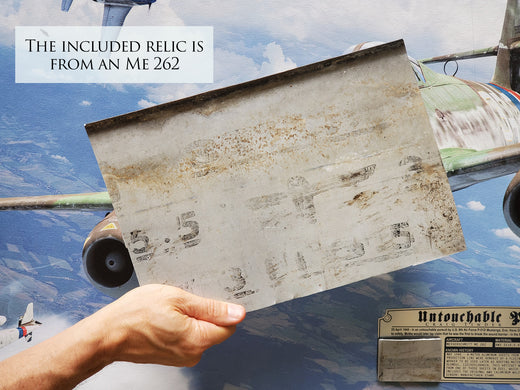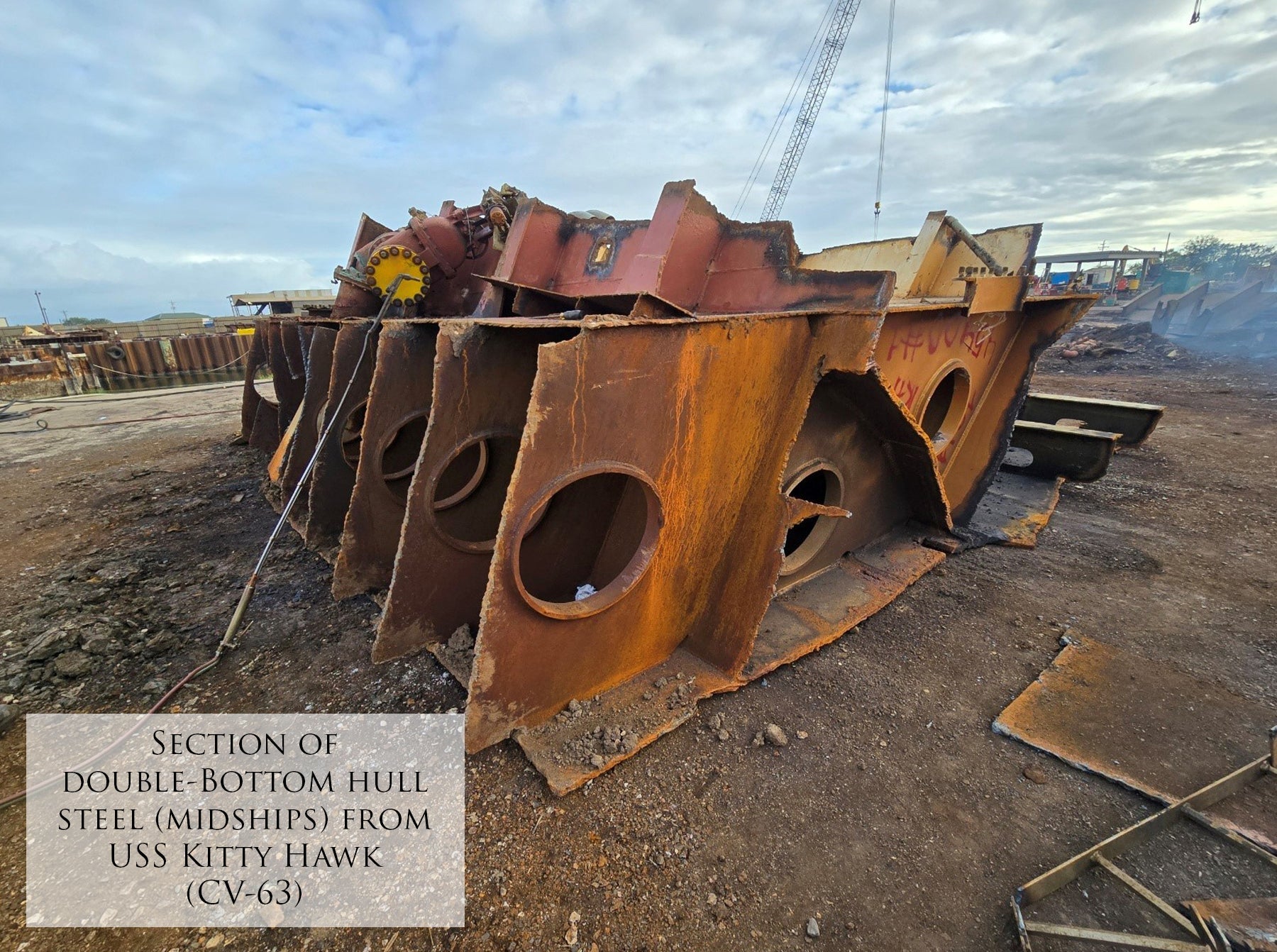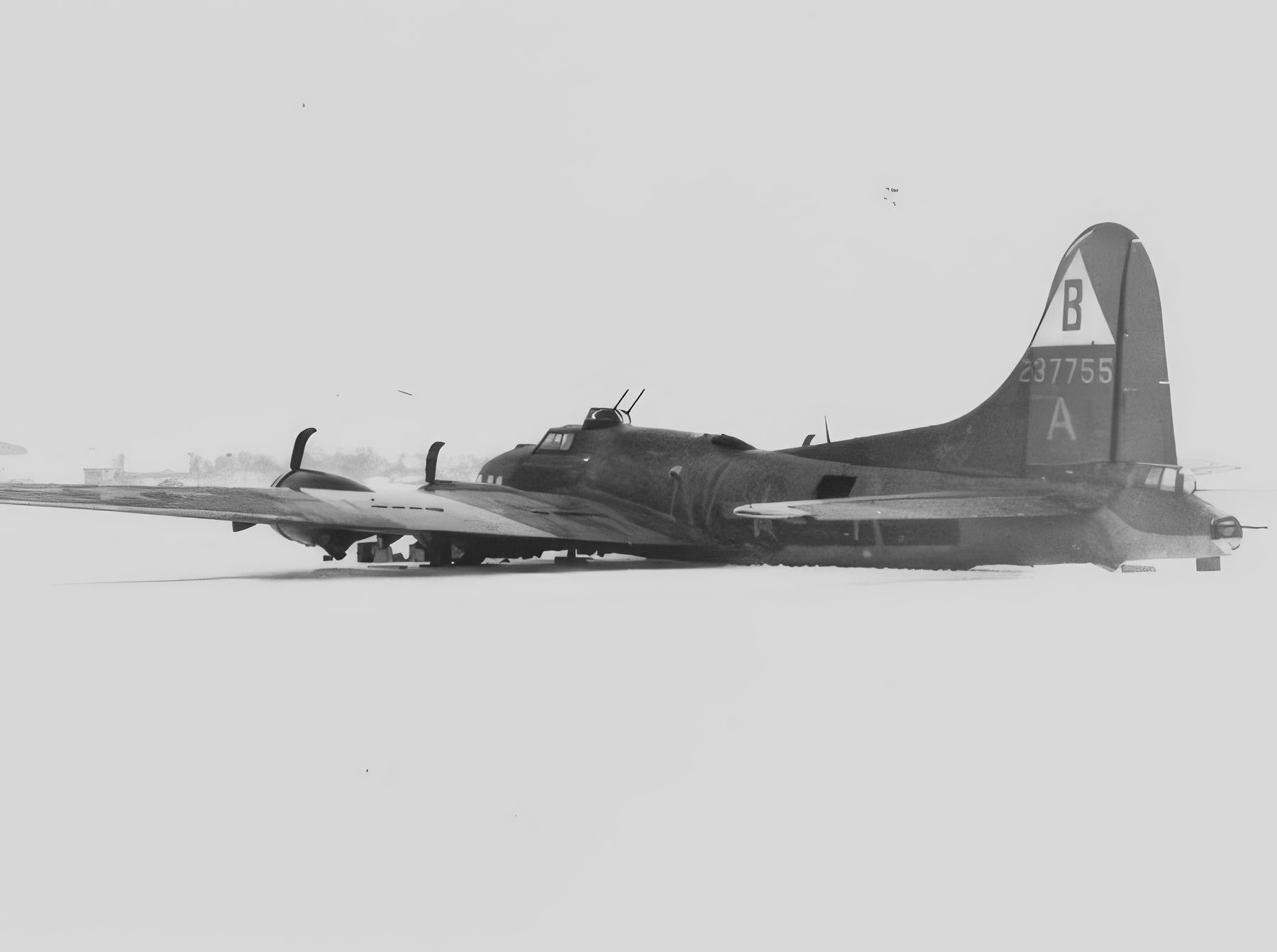This limited edition art print features a mounted relic from an aluminum sheet used in the production of the Me 262, salvaged in May 1945 and later repurposed as roofing material; it depicts the dramatic scene of 25 April 1945, when Ens. Hans Guido Mutke, piloting his Me 262 "White 3," evaded pursuing P-51D Mustangs of the U.S. 8th Air Force, in what Mutke claimed was the first instance of breaking the sound barrier in the Me 262.
Details About the RELIC:
May 1945 - Aluminum wing skins and sheets from an Me 262 production line were removed by a fleeing Czech worker when German production ceased at the end of the war. Using a cart and horse, the sheeting was taken to the worker's property and was used as roofing material. Aces In Action was able to acquire most of the roofing material in 2021 which had been used as wing skins on the latest production aircraft. Fortunately, the sheets had been installed with the stamping side down, thus saving the precious markings from the elemtns.
Each relic included with the canvas print was removed from one of those sheets in 2021, which still clearly includes the original AWS (Aluminum Walzwerke Singen) Eagle 3116.5 manufacturer stamp.
 Me 262 Relic used in "Untouchable Pursuit" Print
Me 262 Relic used in "Untouchable Pursuit" Print
 Me 262 AWS 3116.5 Aluminum
Me 262 AWS 3116.5 Aluminum
 Visible Eagle AWS markings inside wing skins
Visible Eagle AWS markings inside wing skins
 Me 262 Relic as used in "Untouchable Pursuit" Print
Me 262 Relic as used in "Untouchable Pursuit" Print
The Story Behind the Print:
25 April 1945 - In an untouchable pursuit by the U.S. 8th Air Force P-51D Mustangs, Ens. Hans Guido Mutke accelerates "White 3", his trusted Me-262 to safety. Mutke would later claim that he was the first to break the sound barrier - in the Me-262.


 Messerschmitt Me 262 in Deutsches Museum in Munich, Germany
Messerschmitt Me 262 in Deutsches Museum in Munich, Germany


Share:
Stuka Assault, the story behind "Eagle of the Eastern Front"
Letters from Home, the story behind "Hurry Home Honey"